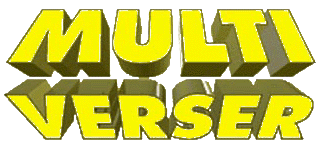Multiverser: The Game

Right from the beginning, I had players who were as concerned with the appearance of the horse they were buying as they were with its quality; therefore, I created tables to determine exactly how tall, what color, and what distinguishing markings were on the horses at the stables when the characters went shopping. Here are those tables.
| Hands | Light (d10) | Medium (d8) | Heavy (d6) | Draft (d6) |
| 13-3 | 1 | |||
| 14 | 2 | |||
| 14-1 | 3 | |||
| 14-2 | 4 | |||
| 14-3 | 5 | |||
| 15 | 6 | 1 | ||
| 15-1 | 7 | 2 | ||
| 15-2 | 8 | 3 | ||
| 15-3 | 9 | 4 | ||
| 16 | 10 | 5 | 1 | |
| 16-1 | 6 | 2 | ||
| 16-2 | 7 | 3 | ||
| 16-3 | 8 | 4 | 1 | |
| 17 | 5 | 2 | ||
| 17-1 | 6 | 3 | ||
| 17-2 | 4 | |||
| 17-3 | 5 | |||
| 18 | 6 |
It is apparent that horses of the same height may fall into different categories. The girth and weight of the horse and its overall build and musculature have as much to do with the "size" of a horse as its height. (Although I am not much of a horseman myself, I was instructed in the matter by a couple of girls who grew up in barns....)
The color of the horse and its markings may be rolled on this table. This is not an all-inclusive collection; some horse colors may have black markings (socks and stockings, mostly), and all markings are individual to the horse, but this list gives sufficient variety for play. A d20 is rolled to determine what color the horse is (the first two columns), and the remaining columns express the probability of the indicated markings (e.g., 1/8 indicates that any roll not greater than 1 on a d8 will result in a marking of that type). Socks and stockings are rolled separately and, although a horse may have some socks and some stockings, it can't have a sock and a stocking on the same foot....
| d20 | Horse Color |
White Star |
White Splash |
d4 White Socks |
d4 White Stockings |
White Mane & Tail |
Black Mane & Tail |
| 1-2 | Brown Pinto | ||||||
| 3 | Black Pinto | ||||||
| 4-6 | Chestnut | 1/8 | 1/10 | 1/6 | 1/6 | ||
| 7-10 | Bay | 1/8 | 1/10 | 16 | 1/6 | ||
| 11-12 | Buckskin | ||||||
| 13-16 | Gray | 2/6 | |||||
| 17-19 | Black | 1/8 | 1/10 | 1/6 | 1/6 | 1/20 | |
| 20 | White* |
But is it a boy or a girl horse? From an historical perspective, occidental cavalry at the time of the Crusades rode stallions almost exclusively, while their mid-eastern opponents had an equally strong preference for mares; however, the first battle fought in the spring gave both sides an understanding of the disadvantages of this situation, and more geldings appeared (on both sides, I suspect) thereafter. These balances reflect more the modern situation than the historic ones; the referee might determine that characters of a particular class or race will always ride one or another type.
d6
1 Stallion
2-3 Gelding
4-6 Mare

Return to Dungeon Master Reference Materials Contents.
Return to M. J. Young's Dungeons & Dragons Materials.